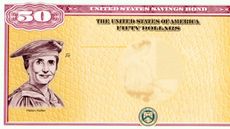USPS to Raise Rates for "Holiday" Season Again
If you want to avoid surge pricing for the postal service, you’ll need to send your holiday packages in September.
- (opens in new tab)
- (opens in new tab)
- (opens in new tab)
- Newsletter sign up Newsletter


For the third year in a row, the United States Postal Service has announced a rate increase for what they call “peak holiday season.” If you think that means shipping is going to cost more after, say, Black Friday, you’re wrong: Surge pricing starts Oct. 2 and runs through Jan. 22, 2023. The end date is a new twist: In 2020 and 2021, these surcharges ended Dec. 26.
As the calendar years might indicate, these price surges have their origins in “increased expenses and heightened demand for online shopping package volume due to the coronavirus pandemic and expected holiday ecommerce,” to quote the USPS in 2020. The 2022-2023 increase is explained as necessary “to cover extra handling costs to ensure a successful peak season.”
The increases vary by package size, service and zone, and the range can be seen at this link: https://about.usps.com/newsroom/national-releases/2022/0810-usps-announces-proposed-temporary-rate-adjustments.htm. (opens in new tab) Retail consumers – that is, people using USPS to ship their own items – may most directly notice the increase of $0.95 to every USPS Priority Mail flat-rate item. Commercial rates are also due for increases.

Sign up for Kiplinger’s Free E-Newsletters
Profit and prosper with the best of expert advice on investing, taxes, retirement, personal finance and more - straight to your e-mail.
Profit and prosper with the best of expert advice - straight to your e-mail.
The price surge still needs approval from the Postal Regulatory Commission (PRC), which is almost certain to give its OK. But that process reflects USPS’s singular status as a government agency. Private shippers can – and do – raise rates when they feel they can. A range of surcharges from UPS (opens in new tab) and FedEx (opens in new tab) are already currently in effect.
At least the outlook for shipping rates broadly for 2023 promises some relief, as this has been one of the economy’s most inflationary sectors, particularly for trans-Pacific cargo and packages. According to last week’s special issue of The Kiplinger Letter, a slowing economy should bring freight demand into better balance with available capacity to move it, leading to rate reductions next year. If a recession materializes, the drop in freight costs could be swift. If instead the economy muddles along at a slow growth rate, the decline in freight rates will take longer. But either way, the cost of moving goods by rail, truck, ship or plane should get better, helping to eventually reduce overall inflation.
For instance, Neel Jones Shah, executive vice president and global head of air freight at freight forwarder Flexport, told Kiplinger in a recent interview that “shipping costs are definitely going to come down” now that there isn’t such a crush to move goods by plane. That’s a sharp turnaround from the pandemic, when freight costs soared because consumers were buying a lot of goods and shippers were scrambling to keep up with demand, causing the cost of goods shipped by air to soar. Looking ahead to next year, he says that “2023 is going to look a lot like the back half of 2022,” meaning there should be more slack in the system: A welcome bit of relief for the companies that import a lot of goods, and the customers who buy them.

Jim joined Kiplinger in December 2010, covering energy and commodities markets, autos, environment and sports business for The Kiplinger Letter. He is now the managing editor of The Kiplinger Letter and The Kiplinger Tax Letter. He also frequently appears on radio and podcasts to discuss the outlook for gasoline prices and new car technologies. Prior to joining Kiplinger, he covered federal grant funding and congressional appropriations for Thompson Publishing Group, writing for a range of print and online publications. He holds a BA in history from the University of Rochester.
-
-
 Longevity: The Retirement Problem No One Is Discussing
Longevity: The Retirement Problem No One Is DiscussingMany people saving for retirement fail to take into account how living longer will affect how much they’ll need once they stop working. What should they do?
By Brian Skrobonja, Chartered Financial Consultant (ChFC®) • Published
-
 Capital Gains Taxes Trap: How to Avoid Mutual Fund Tax Bombs
Capital Gains Taxes Trap: How to Avoid Mutual Fund Tax BombsIt’s bad enough when your mutual fund’s assets lose value, but owing unexpected capital gains taxes after those losses is doubly frustrating.
By Samuel V. Gaeta, CFP® • Published
-
 Amazon’s Tip My Driver Program Gets New Life
Amazon’s Tip My Driver Program Gets New LifeA fresh infusion of $1 million for “Alexa, tip my driver” means you can once again tip your delivery driver $5.
By Bob Niedt • Last updated
-
 Best Cash Back Credit Cards April 2023
Best Cash Back Credit Cards April 2023Smart Buying Looking for the credit card that pays the most cash back? These lenders may pay hundreds of dollars, with minimum hassle.
By Lisa Gerstner • Last updated
-
 I-Bond Rate Is 6.89% for Next Six Months
I-Bond Rate Is 6.89% for Next Six MonthsInvesting for Income If you missed out on the opportunity to buy I-bonds at their recent high, don’t despair. The new rate is still good, and even has a little sweetener built in.
By David Muhlbaum • Last updated
-
 What Are I-Bonds?
What Are I-Bonds?savings bonds Inflation has made Series I savings bonds enormously popular with risk-averse investors. How do they work?
By Lisa Gerstner • Last updated
-
 Your Guide to Open Enrollment 2023
Your Guide to Open Enrollment 2023Employee Benefits Health care costs continue to climb, but subsidies will make some plans more affordable.
By Rivan V. Stinson • Published
-
 Watch Out for Flood-Damaged Cars from Hurricane Ian
Watch Out for Flood-Damaged Cars from Hurricane IanBuying & Leasing a Car In the wake of Hurricane Ian, more flood-damaged cars may hit the market. Car prices may rise further because of increased demand as well.
By Bob Niedt • Last updated
-
 What You Need to Know About Life Insurance Settlements
What You Need to Know About Life Insurance Settlementslife insurance If your life insurance payments don’t seem worth it anymore, consider these options for keeping the value.
By David Rodeck • Published
-
 Best Travel Rewards Credit Cards April 2023
Best Travel Rewards Credit Cards April 2023credit cards Business road warriors and leisure travelers can use travel rewards credit cards to turn miles logged into other things — including more travel.
By Lisa Gerstner • Last updated









